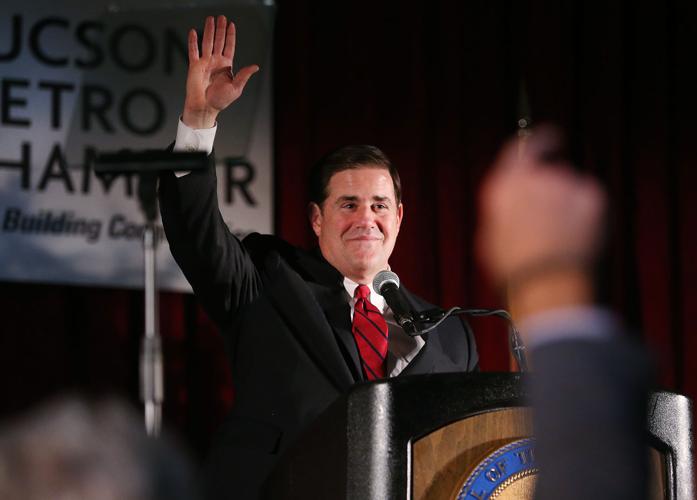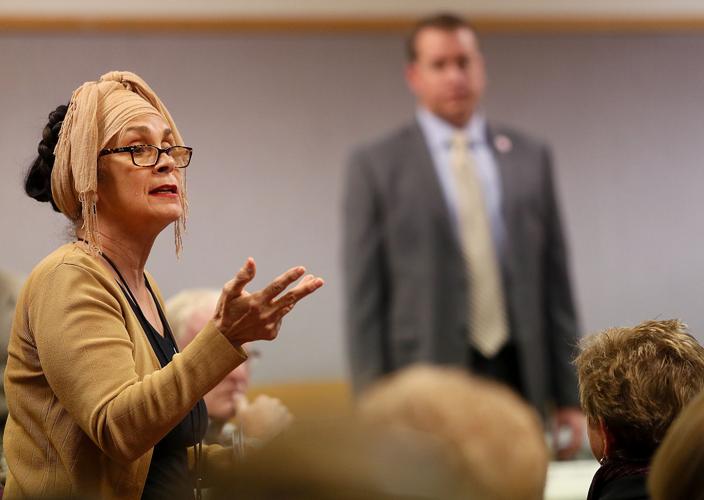PHOENIX — Led by a pair of billionaires, proponents of Proposition 123 have raised more than $4 million so far to persuade voters to approve the measure.
If approved in a May 17 special election, the plan would pump $3.5 billion into public schools over the next decade. It also would bring an end to a lawsuit that schools and education groups filed against the state in 2010.
Reports filed as of the deadline late Friday showed the pro-123 forces had picked up $3.7 million from the time the campaign started through Feb. 23. That’s the last date for which they are required to account for donations.
But Capitol Media Services has identified another nearly $368,000 in major donations since that date.
To this point, there appears to be no active opposition, at least on the financial front. The one committee, organized by Tucsonan Andrew Gardner, reported taking in only $617.
Gardner said he hopes to do better once Arizona’s presidential preference election is over on Tuesday and voters begin to pay more attention to the May election. Still, he conceded he’s never going to come anywhere close to the war chest already amassed by backers.
“I don’t have any billionaires on speed dial,” Gardner said.
There are at least two billionaires in the pro-123 camp.
One is Bruce Halle, a Paradise Valley resident who is founder and chairman of the board of privately held Discount Tire Co. He wrote a $1 million check to the campaign in January. Forbes lists his net worth at $6 billion.
The campaign also got another $1 million in February from Bob and Renee Parsons. He is founder of the web-hosting site GoDaddy and, according to Forbes, is worth $2.3 billion.
Gardner is apparently on his own in trying to defeat Proposition 123. State Treasurer Jeff DeWit, who had lobbied lawmakers to kill the plan, hasn’t put together any opposition campaign of his own.
But Gardner is relying on at least some of the reasons DeWit cited in opposing the plan to argue why voters should ignore the broad support — and broad funding — for the ballot measure.
The state Supreme Court already ruled that lawmakers illegally ignored a 2000 voter-approved mandate to boost funding to schools annually to account for inflation. That sent the case back to a trial judge, who directed legislators to immediately boost funding by more than $300 million. But that ruling is on appeal. And there’s never been a ruling on whether the state owed schools another $1 billion in missed aid for prior years.
Education groups have lined up in support of the proposition, with the consensus being that a guarantee of getting at least some of what schools are owed is better than the alternative: dragging the lawsuit on for years — and possibly losing.
“There is no other way for this kind of money to get into the fiscal year this year, (to) protect inflation funding going forward,” said Andrew Morrill, president of the Arizona Education Association, when the deal was crafted. “We have capital needs; we’ve lost full-day kindergarten.”
Gardner, however, sees another side.
He pointed out that the plan would amend the Arizona Constitution to say that, beginning in 2024, lawmakers would not be required to increase aid to education to account for inflation any time K-12 funding exceeds 49 percent of the total state budget. And if it hits 50 percent, the Legislature actually can cut state aid.
That’s not a problem now, with current school spending at about 42 percent of state spending. But Gardner fears that figure could grow — and not because more dollars would be flowing to schools.
“The governor campaigned promising to cut taxes every single year,” he said, noting statements made by Doug Ducey during his successful gubernatorial race in 2014. Gardner said if those spending cuts reduce total state spending, it won’t take long for the school share of that to hit the 49 percent figure.
Christian Palmer, spokesman for the pro-123 campaign, said the cap is necessary.
“It’s there to protect the state’s ability to fund all the other vital services,” he said, especially if the economy tanks. And he brushed aside the possibility of someone “gaming” the system by cutting overall state spending, saying the education groups who are backing the ballot measure examined the provisions closely and are comfortable with them.
That was the assessment of Tim Ogle, executive director of the Arizona School Boards Association, when the compromise was worked out. He said it wasn’t necessarily the package he would have crafted.
“Whenever you are in negotiations, there’s no perfect deal,” he said. But he said when economists ran the models and scenarios, “We were comfortable with the entire package.”
There also are provisions to allow the state to suspend payments in years when growth in employment and sales tax receipts falls below 2 percent. But Ogle said the deal is structured so that schools essentially recoup any lost inflation aid once the economy recovers.
Gardner has other concerns.
He cited figures first noted by DeWit, who pointed out that taking more money out of the education trust fund for the next decade will mean less in the account by 2025 than if the withdrawal formula is not altered by Proposition 123.
“By the time my son is ready for high school, the trust will generate at least $70 million fewer every year because the value of the trust will not grow than it otherwise would,” Gardner said.
He said the withdrawals are not necessary, pointing out that state revenues are running ahead of expenses.
But Palmer said that’s not necessarily a permanent situation. He said this deal provides schools with “budget certainty” that allows them to hire teachers now and be sure that the money will be there in future years.





